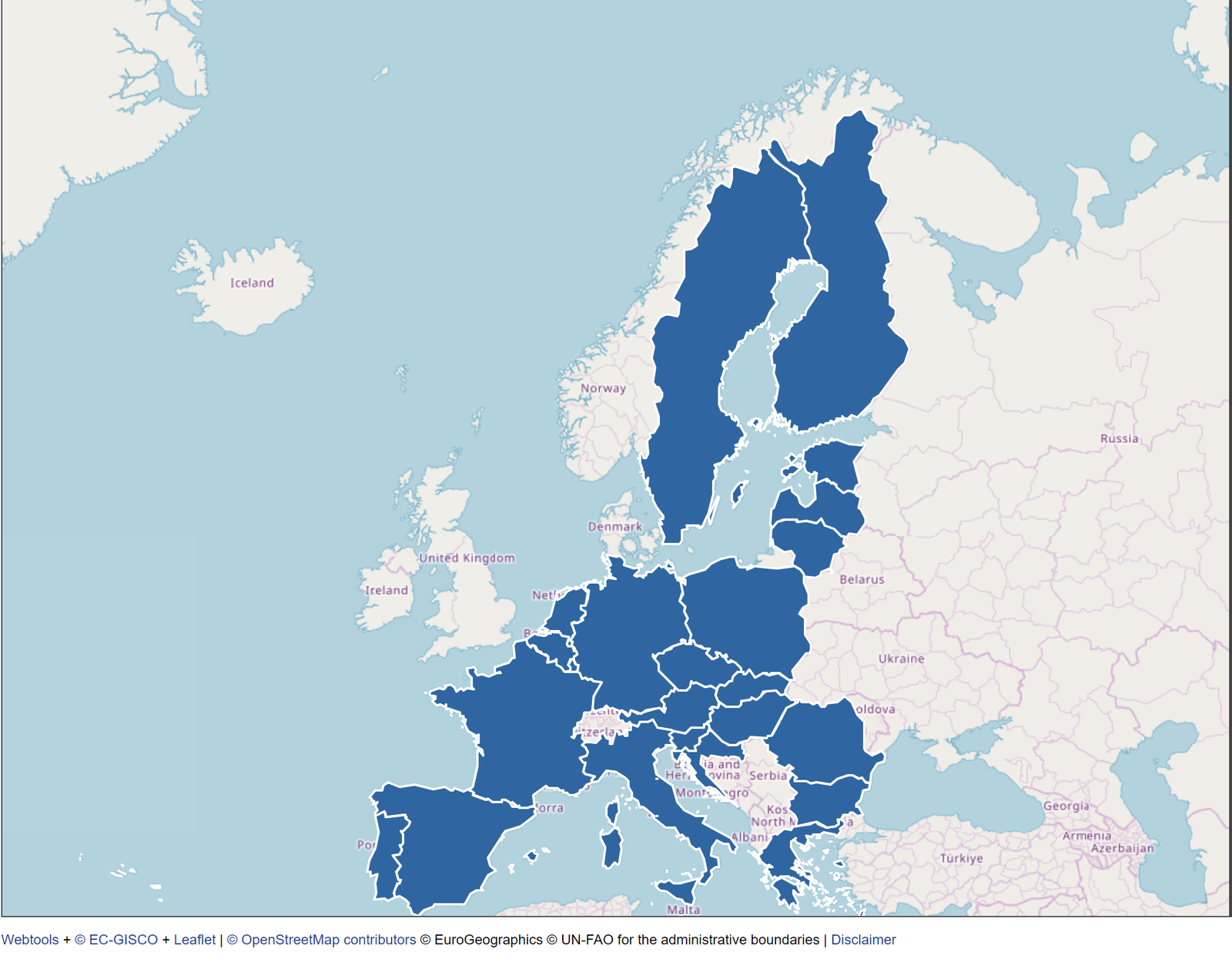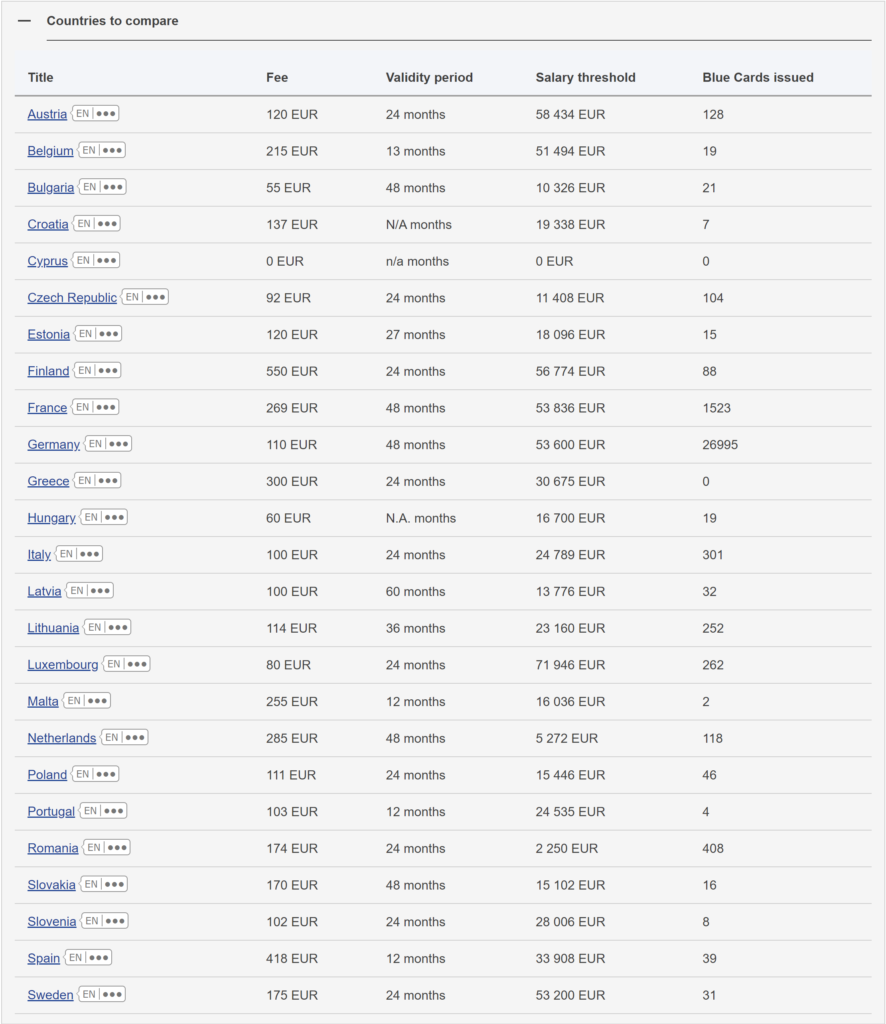A Simple Guide To EU Blue Card
What is EU Blue card?
The EU Blue Card, launched in 2012 by European nations, serves as a long-term residency permit for non-EU citizens employed in the region. This visa grants its holders the privilege to live and work in any of the 25 participating EU nations.
Out of all the EU countries, Denmark, Ireland, and the four EFTA countries (Norway, Iceland, Switzerland, and Liechtenstein) have chosen not to participate in the EU Blue Card program.
The Blue Card system was developed to attract top global talent to the European labor market. This significant technical immigration channel for the EU region provides cardholders with rights in Europe comparable to those of citizens, including in education, medical care, travel, and more. The Blue Card is issued for a maximum of five years and can be renewed under the same conditions. However, if the applicant’s employment contract is for a period of one to three years, the relevant authorities may issue a Blue Card for a duration matching the length of the employment contract.
Blue Card holders generally need to work and live in the country that issued them the Blue Card for 18 months. After that, they can work and settle in any EU country.
Currently, 25 EU member countries regularly issue the EU Blue Card, or choose not to issue, but recognize the EU Blue Card.

Who can apply for an EU Blue card?
The EU Blue Card is categorized into seven types: highly-qualified or skilled workers, researchers, students, vocational trainees, seasonal workers, intra-corporate transfers and self-employed/entrepreneurs.
While each category has its own unique criteria, common prerequisites for employment-based Blue Cards include:
1. Holding at least a master’s degree;
2. Accumulating over 5 years of relevant work experience;
3. Securing a minimum one-year employment contract from an EU-based company that meets the salary benchmarks of the card-issuing country;
4. Adhering to the legal stipulations set by the issuing country.
The following are statistics from the official EU website, detailing the minimum salary requirements for the EU Blue Card as stipulated by each country’s laws, and the number of Blue Cards issued, among other data.

How to apply for an EU Blue card:
To apply for the EU Blue Card, one must submit their application to the authorities of the country where they intend to work.
For most non-EU citizens, the biggest challenge in obtaining an EU Blue Card is securing a local contract offer. For those not employed by multinational companies, there are two proactive job-seeking approaches:
1. Live in Europe initially under a student or other visa types, acclimate to the local culture, language, and environment, and then pursue job opportunities.
2. If one possesses notable expertise in their profession, they can scout for positions on specific industry sites, the official EU portal apply.eu, https://ec.europa.eu/eures/, or other EU job platforms. These sites often host high-caliber European firms, but they typically have stringent professional criteria. A standout resume might prompt companies to make contact and potentially offer a position.
Once you secure employment and meet the salary and educational background requirements among other criteria for the EU Blue Card, you or your company can apply for the Blue Card on the platform.
The application process, including documentation requirements, differs by country. The EU sets the overarching guidelines, but implementation varies: some member countries allow online submissions, while others necessitate in-person applications at local consulates.
Furthermore, some EU member states impose quotas, setting an annual cap on the number of Blue Cards they issue.
What are the application process and success rate of EU Blue card?
The general documents required for the EU Blue Card application include the following: application form; a currently valid passport (and any expired ones) with at least 15 months of validity left from the end of the employment contract date; two passport-sized photos; employment contract; current resume and professional competency proof; proof of insurance; proof of meeting salary requirements; employer’s application form; and a certificate confirming no threat to public safety.
The EU Blue Card application process varies by country. Some EU member states allow for online applications, while others require applicants to apply in person at the local consulates or embassies. Typically, the maximum process time doesn’t exceed 90 working days. The visa fees differ by country and currently range between 55 and 550 euros.
In practice, different countries have varied stances and requirements for the Blue Card. Based on EU data up to March 2023, Germany issued 26,995 Blue Cards, while France issued only 1,523. The issuance figures for other countries didn’t surpass a thousand, and notably, neither Cyprus nor Greece issued a single Blue Card.
What are the benefits of holding an EU Blue card?
Holding an EU Blue Card comes with many privileges, including but not limited to the following:
1. Travel and live in any EU country (though one cannot stay in other EU countries for more than 90 days within any 180-day period).
2. Access to education, healthcare, human rights, and other cultural and economic benefits equivalent to EU citizens.
3. Bring family members, including spouses, parents, and minor children, to live in Europe.
4. Leave the EU region for up to 12 months without losing the EU Blue Card status.
5. Retain the EU Blue Card for at least three months after ending an employment contract with an employer. If a job is not found locally after three months, the Blue Card may be revoked.
6. Equal rights regarding working conditions and health care, comparable to EU citizens.
7. Eligibility to apply for a permanent residence green card in the residing country after meeting certain residency requirements.”
Can EU Blue card lead to immigration?
The answer is a definitive ‘yes’.
The validity of the EU Blue Card lasts up to 5 years, and it can be renewed indefinitely. However, if the cardholder leaves their current job, they are given a 3-month transition period to find new employment. If they remain unemployed after these three months, their EU Blue Card will be revoked.
The EU Blue Card serves as a crucial pathway to permanent residency or even citizenship in European countries. After working in a country for 33 months, or 21 months with a B1 level proficiency in the local language, Blue Card holders can apply for permanent residency in that country.
It’s essential to note that any time spent outside the host country does not count towards the residency requirements for permanent settlement.
Useful Links:
EU Blue Card Platform:https://www.apply.eu/
EU Blue Card Official Page:https://immigration-portal.ec.europa.eu/blue-card_en